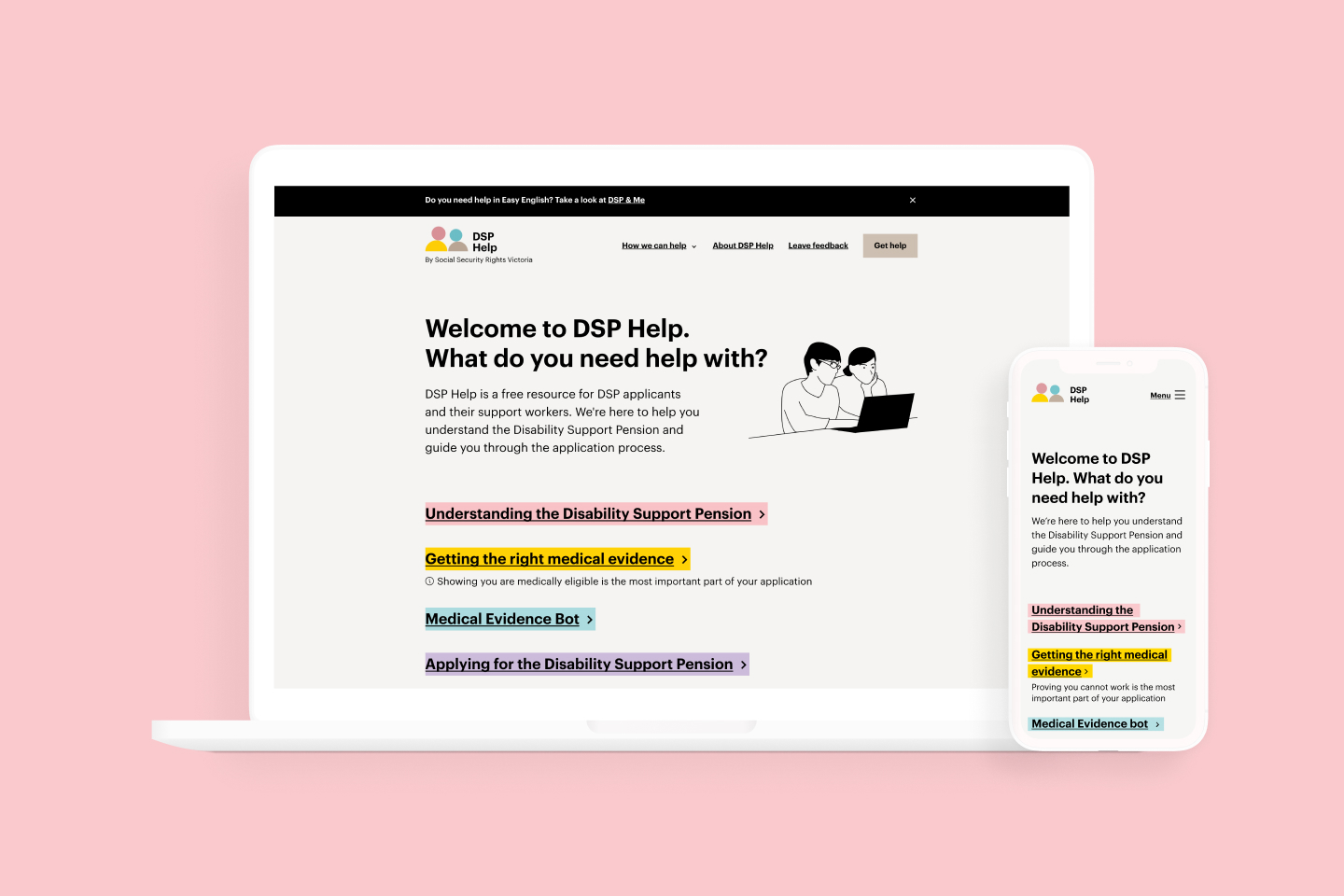Social Security Rights Victoria
Making it easier to apply for the Disability Support Pension
Social Security Rights Victoria engaged Paper Giant to help them design and build an online tool to help people apply for the Disability Support Pension (DSP).
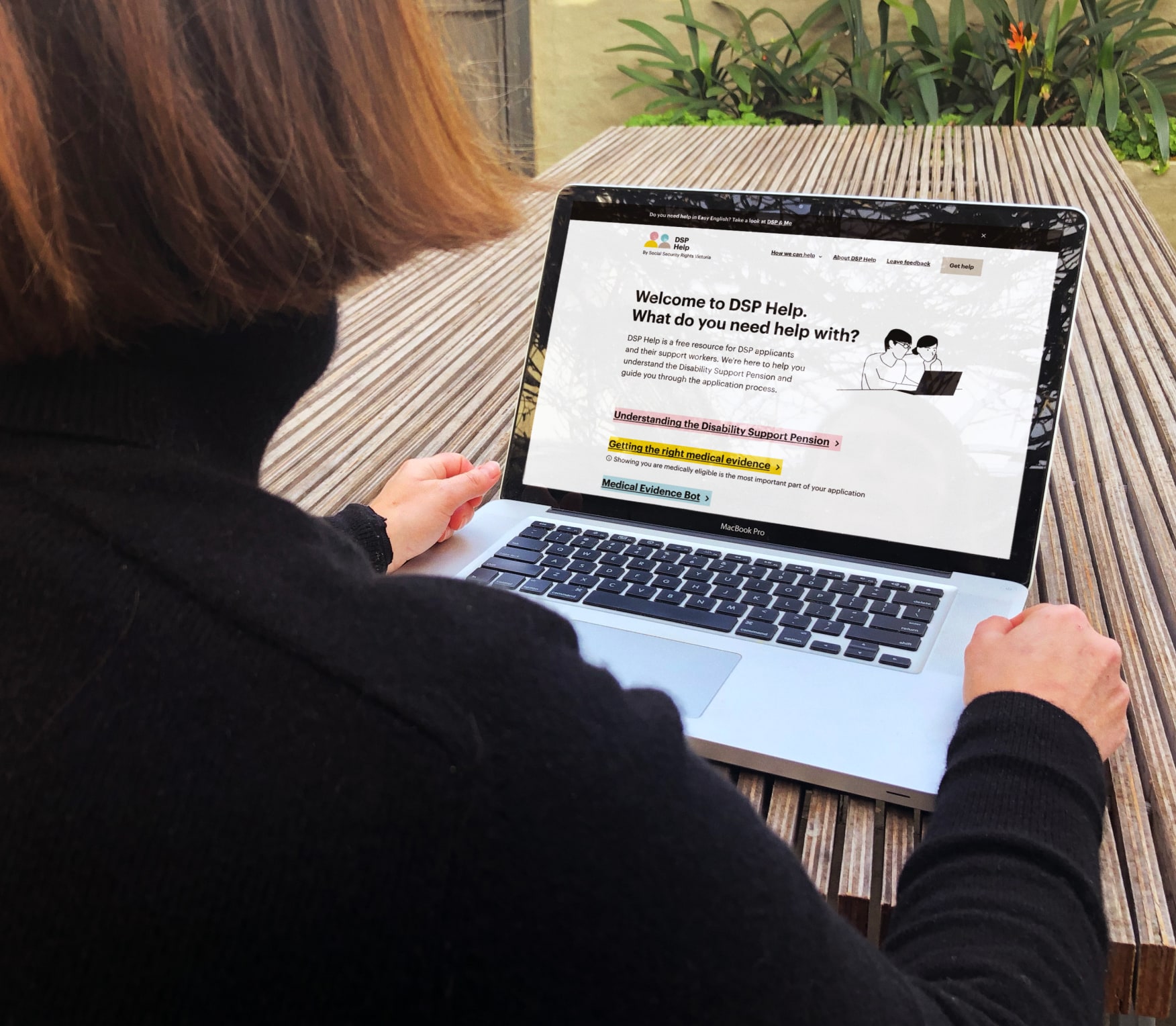
Outcomes
-
Design and launch of the new website, DSP Help
-
Clear, user-driven content, providing a comprehensive overview of the DSP application process
-
A Medical Evidence Bot that matches users to the right ‘impairment tables’ and gives them the tools to ask their doctor for the right kind of evidence
-
Marketing materials to help promote the tool online and offline
Services
- Social innovation
- Product innovation
- UX and UI design
Sectors
The DSP application process is incredibly complex – in more than one way
The Disability Support Pension provides income support for people who cannot work due to permanent illness, injury, or disability in Australia. Despite the absolute necessity of the DSP for many people, getting it is notoriously challenging. DSP eligibility criteria is complex and success often depends on having very specific types of medical evidence.
These complexities compound to make applying for the DSP a taxing journey that can take anywhere between 6 and 18 months.
Social Security Rights Victoria (SSRV), a community legal centre based in Melbourne, engaged Paper Giant to help people apply for the DSP. SSRV regularly works with clients who have had their applications rejected, despite being ultimately eligible for the pension

Meeting the requirements of the 'impairment tables' can be challenging
The information that the government publishes about the DSP is incomplete, and often difficult to understand. We spoke to DSP applicants who described being ‘drip fed’ new requirements throughout the application process – only being given a full picture when their case was finally resolved (or when their application failed).
Services Australia have their own complex rules for assessing applications, including using ‘impairment tables’ – a 65-page piece of legislation.
The success of a DSP application is highly dependent on a letter written by your doctor or medical practitioner. Within this letter, there are a set of requirements that must be fulfilled, including addressing these ‘impairment tables’. Since these rules aren’t clearly communicated to the public, it can be difficult to know what makes a successful application.
Finally, people with disabilities face unique challenges, which adds to the already difficult DSP application process. The stress of applying for the DSP often leads to worsening mental health.
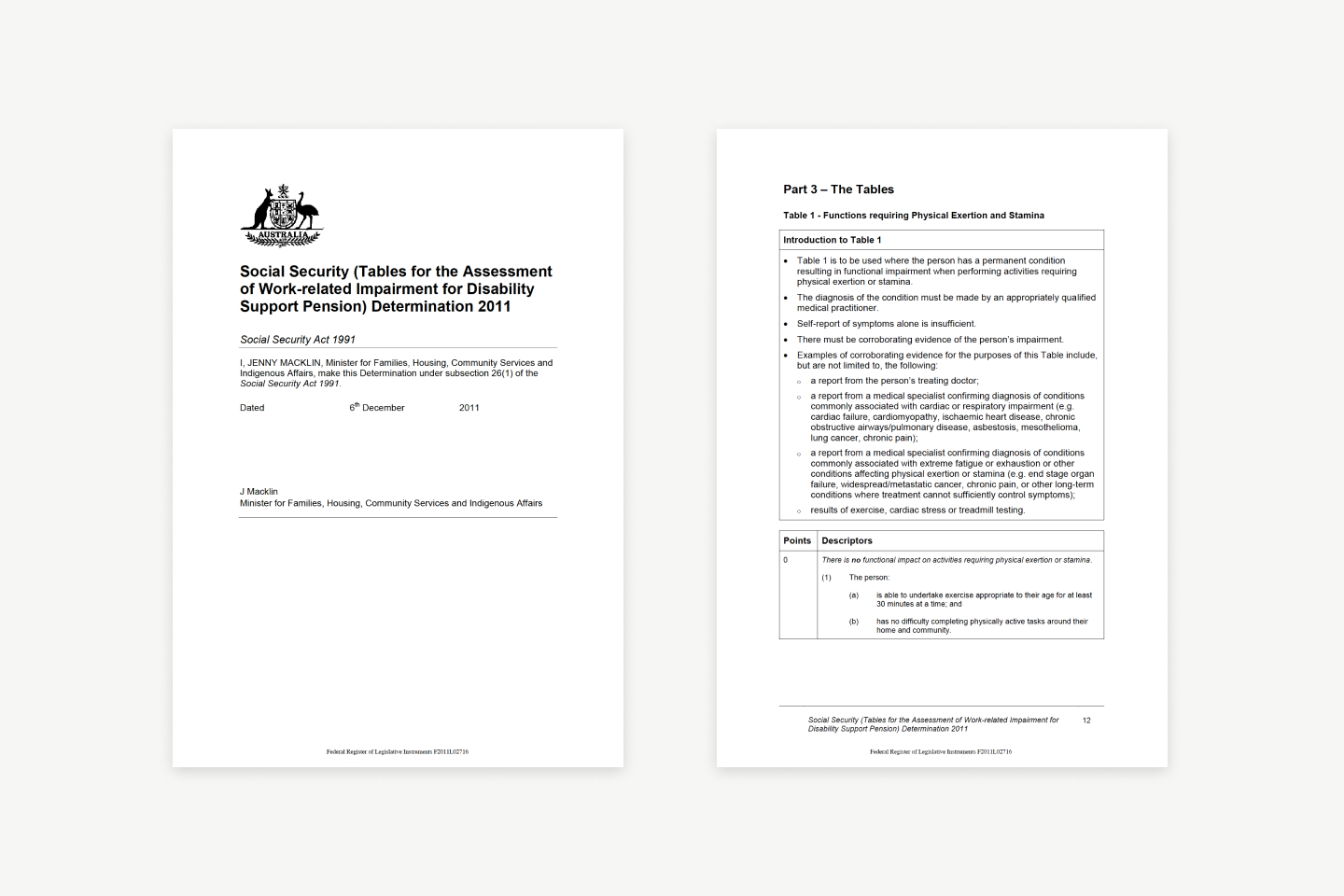
Focussing on ‘the missing middle’ for maximum impact
Social Security Rights Victoria are a passionate group of people, but as a community legal centre, they have limited resources. They chose to focus this project on ‘the missing middle’ – people who could self-serve if the right information and tools were available to support them, freeing support services like SSRV to better serve those with more acute needs.

An iterative design process with community consultation embedded in
We ran a hybrid research/design phase, speaking to people with lived experience as well as support workers and family members who act in a support role. We also engaged frequently with SSRV’s steering committee, which includes people with deep expertise in the disability space – from advocacy, to legal, to policy and research.
After the initial interviews, we ideated and prototyped a range of concepts following the theme of ‘a digital support worker’. We tested these concepts with support workers and those with lived experience, incorporating their feedback and our learnings into the next iteration.
We followed this iterative design process multiple times throughout the course of the project, engaging the community each time. This ensured we delivered a solution that was genuinely useful to ‘the missing middle’ and would free up SSRV time.
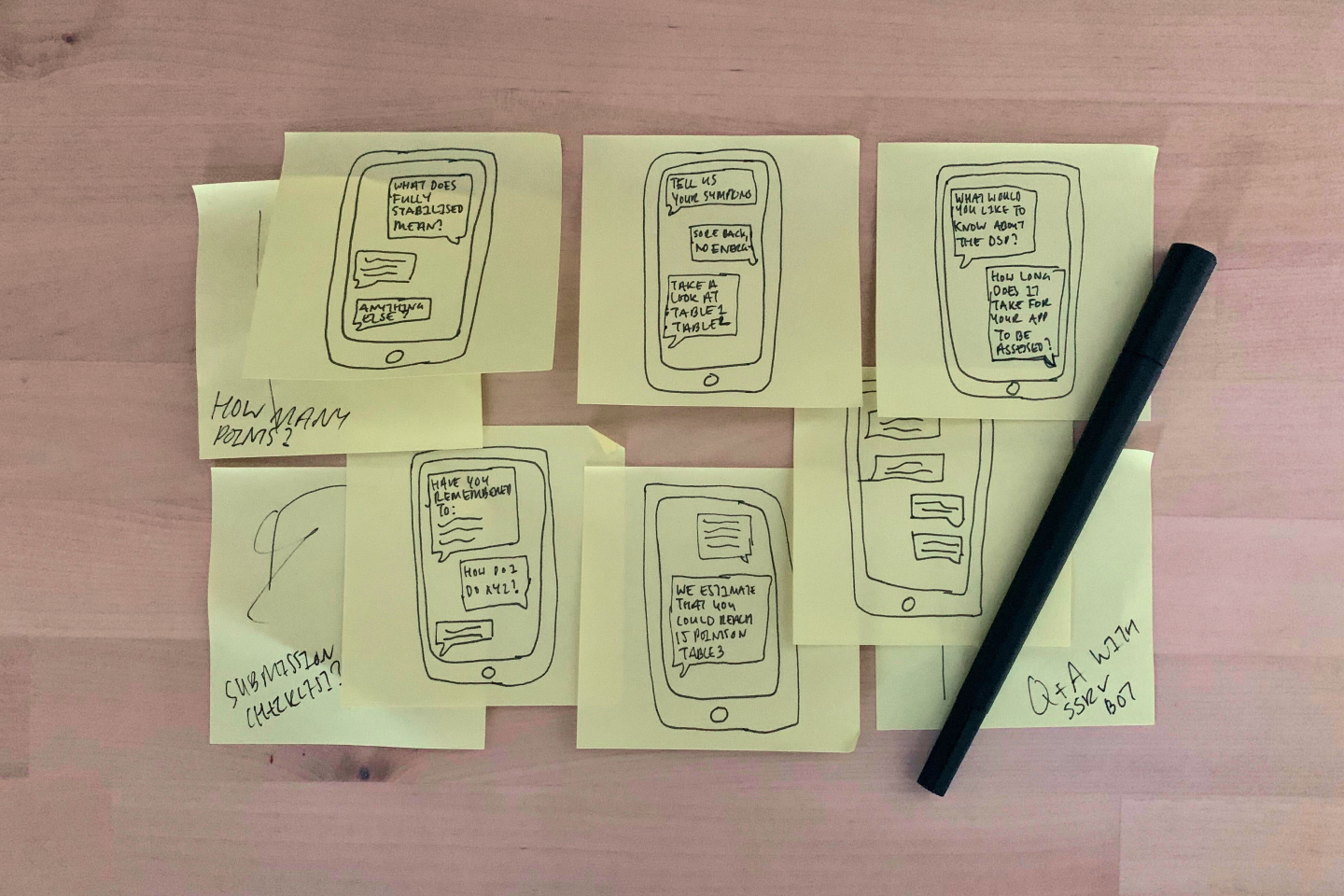
Designing in a very uncertain environment
The project kicked off a couple of weeks before Victoria went into the first round of COVID-19 lockdown. It’s important to note that the effects of COVID-19 saw some government payments increase and become more accessible, but the DSP was not one of them. One positive of the situation was that working remotely made it easier to reach some research participants. Remote interviews also made it more comfortable for some people to participate – particularly those with debilitating disabilities.
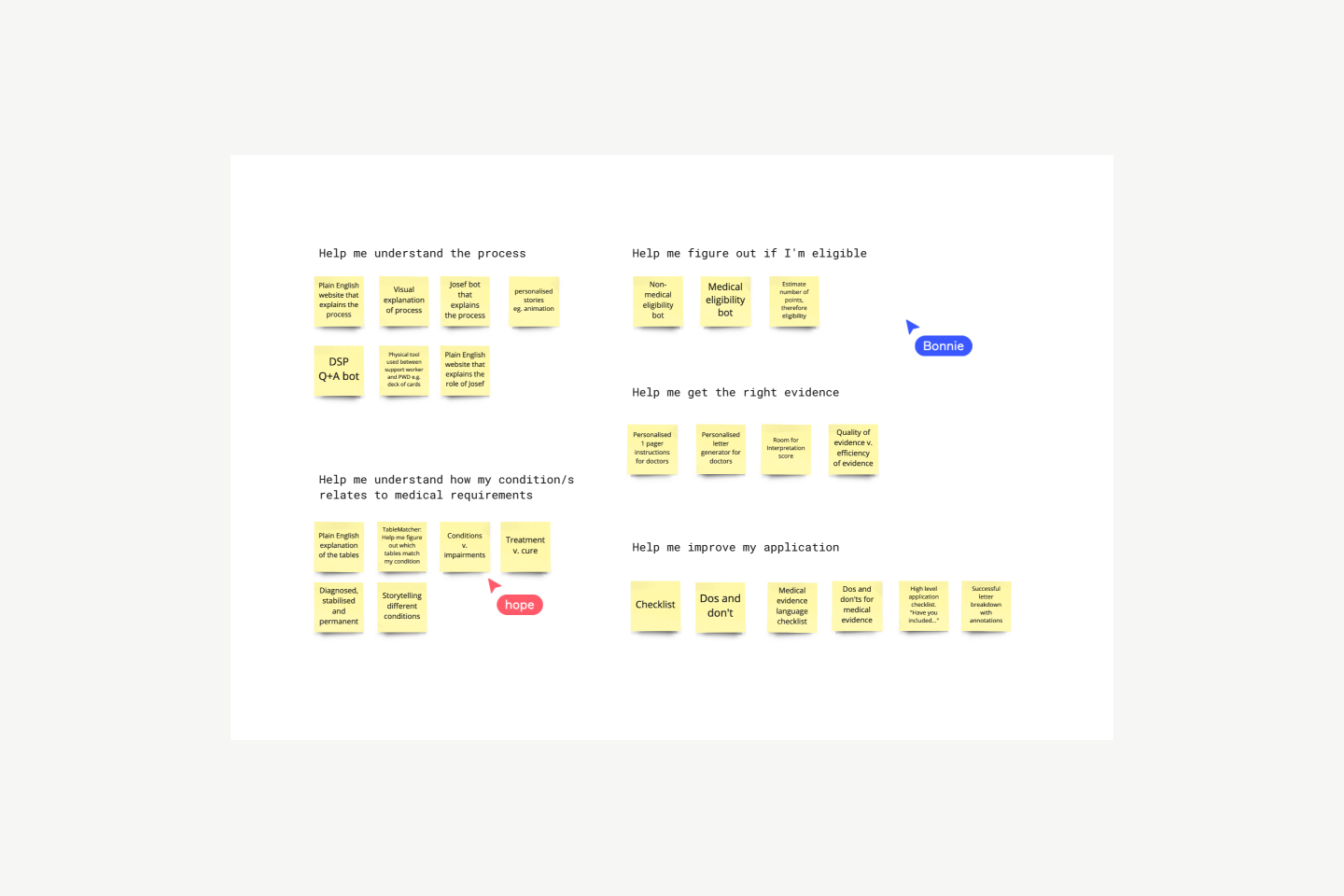
Gathering the right information to support self-service
We landed on a twofold solution: a new content website and a chatbot. Both sought to equip the missing middle with the information and tools needed to create a great DSP application – and get them onto the DSP.
The website provides a comprehensive overview of the DSP, the process and the evidence required for a successful application. The content was co-written with SSRV lawyers, and communicates what many of our participants wished they had known at the start of their DSP journey.
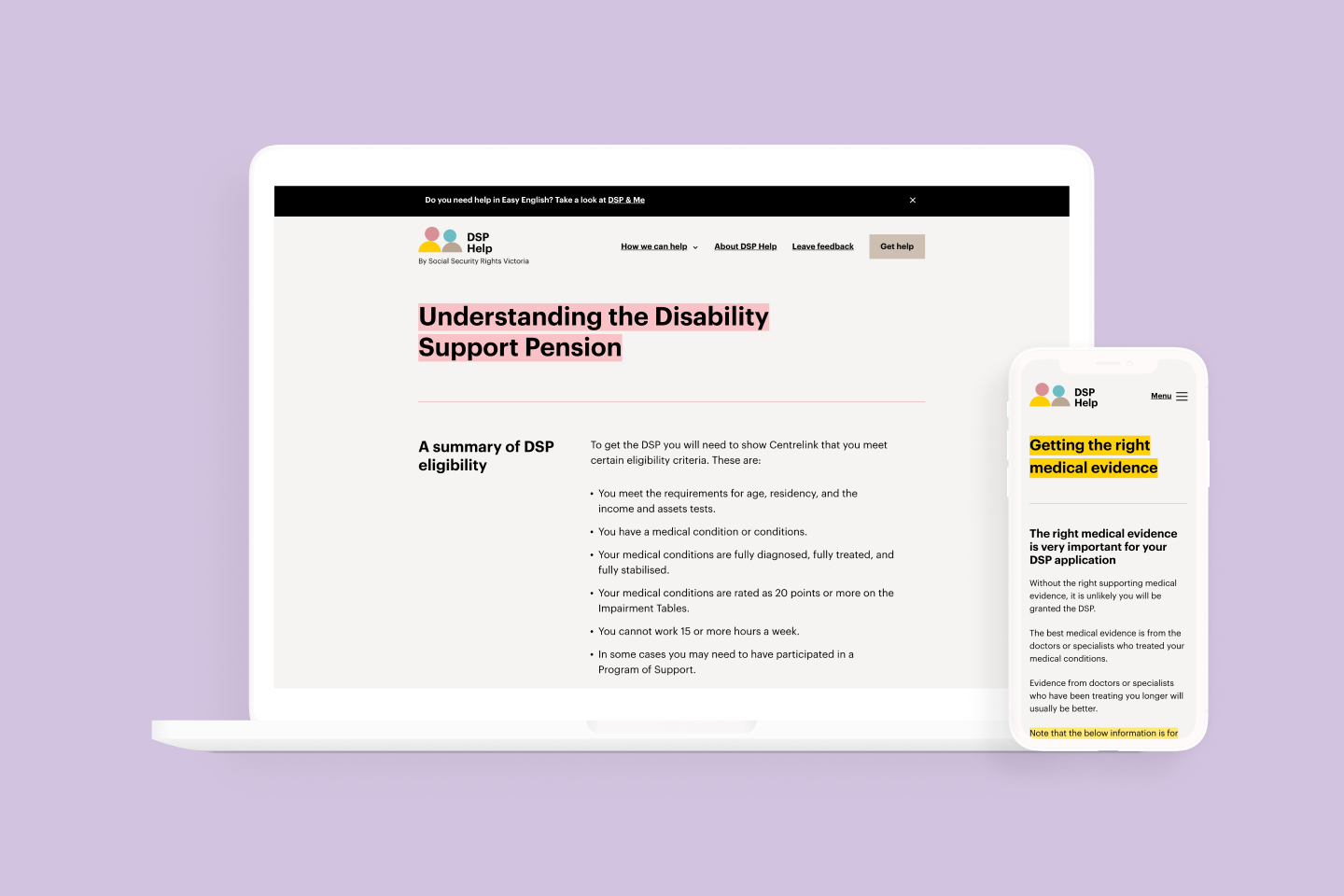
The only tool to address the most important assessment criteria
We also collaborated with the SSRV team to create a Medical Evidence Bot. The bot determines which of the fifteen impairment tables best match the user’s condition, and prompts the user to self-reflect in line with the impairment tables. Addressing the tables is a big win for future applicants, as there’s no tool available that currently does this.
At the end of the conversation with the bot, the user receives a personalised Medical Evidence Kit. The kit has been designed to help medical practitioners write a successful supporting letter for the applicant’s DSP application – which often makes or breaks an application. We collaborated again with the SSRV to craft this kit, which contains detailed instructions around what to include in the letter, as well as intake info about the user’s condition in line with the relevant tables.
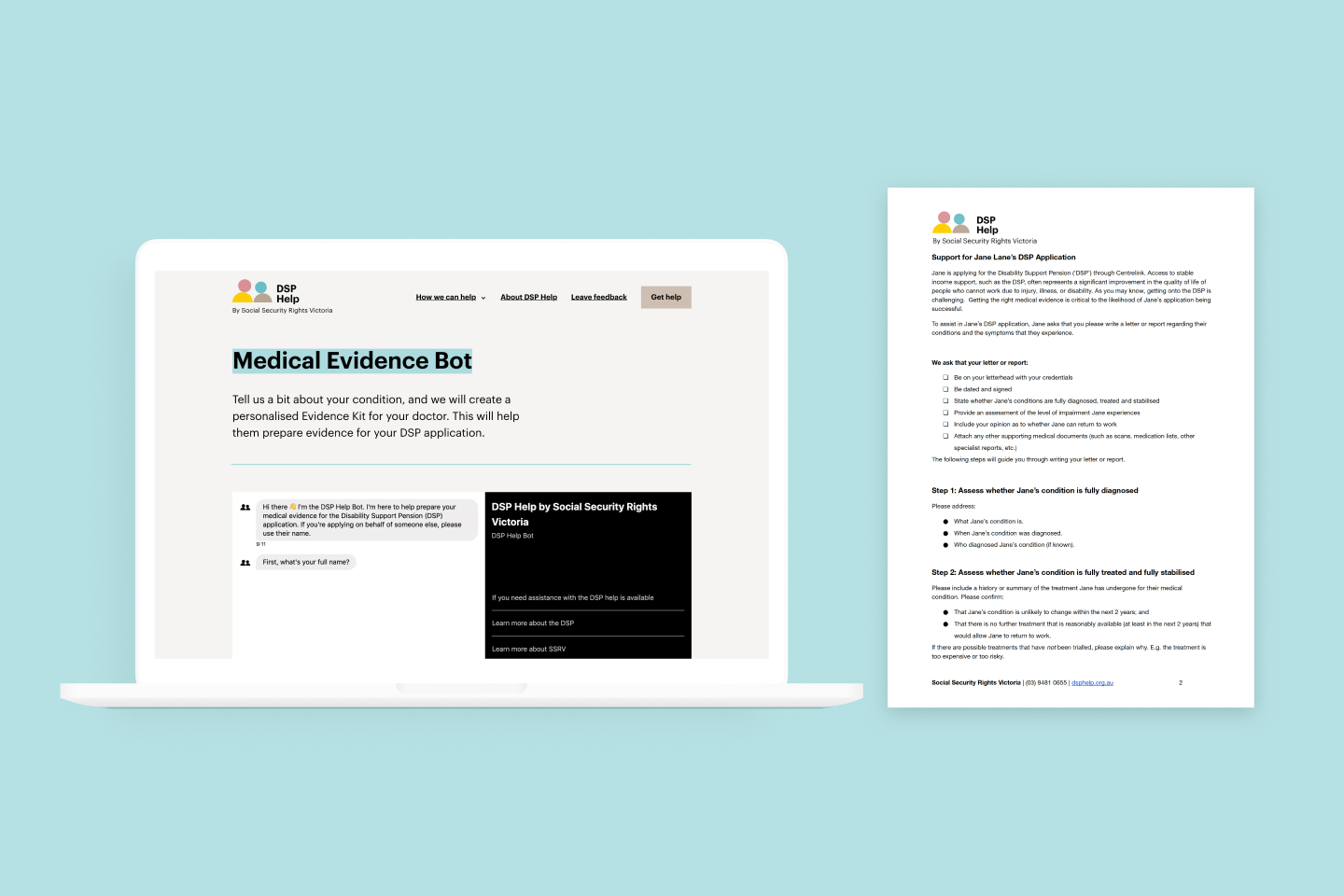
A visual design language that serves the content well
The overall design of the website is clean and clear, allowing content to be the focus. We intentionally created a visual design language that puts content at the centre, since not getting the right content at the right time is what caused so many issues for past applicants.
We gave special attention to typography, to ensure the content is highly readable and easy to consume.
Colour is used as a navigational tool, with each chapter of the website being themed. Within these pages, coloured highlights are used to draw out key information, in order to support scanning and readability.
The colour palette itself is warm, soft and friendly, representing our concept of a digital support worker. This is in stark contrast to the cold, bureaucratic branding of the government agencies that applicants found themselves up against.
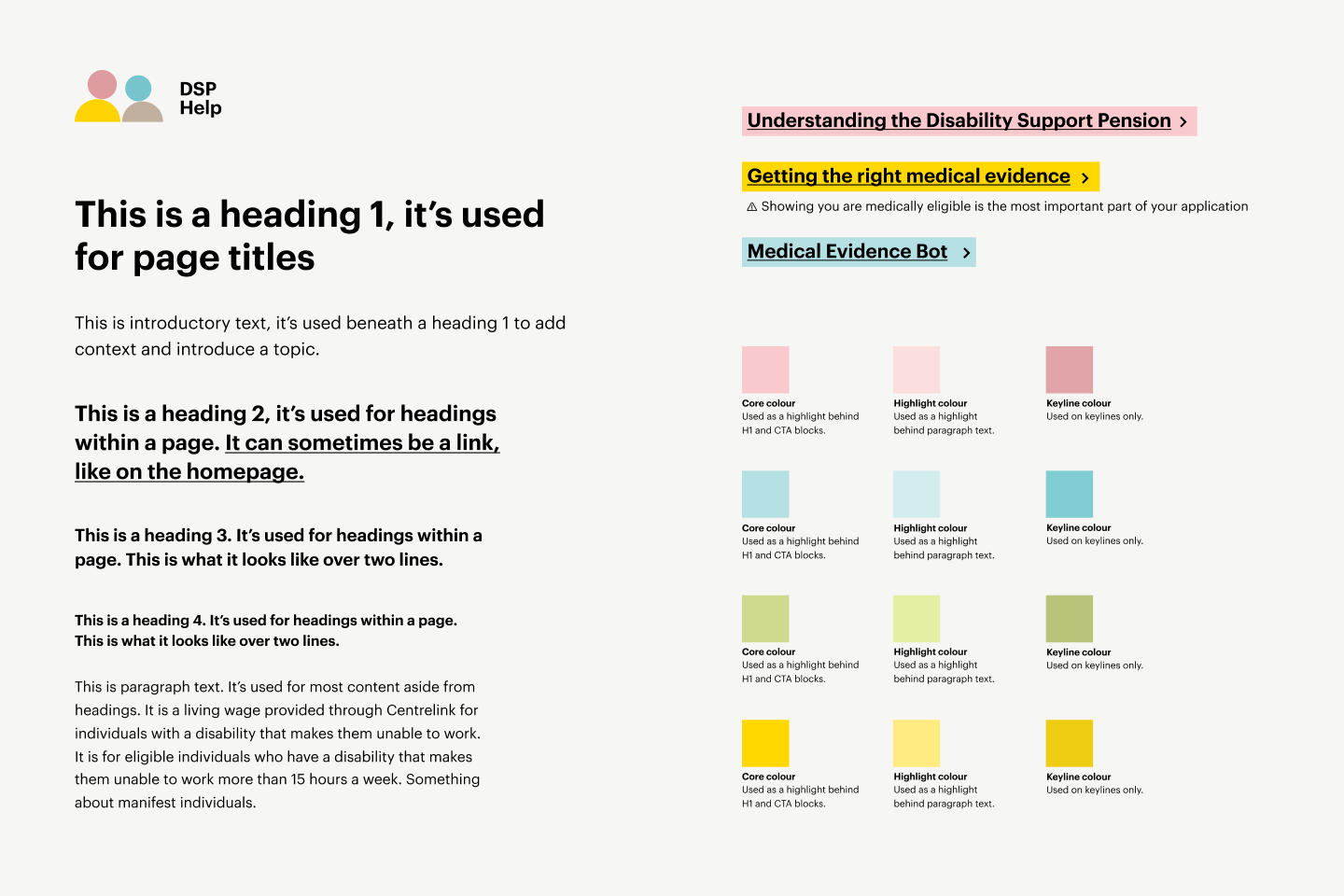
Some of the design styles used in the sites redesign
A website with a strategy
The online resource DSPHelp.org.au launched in August 2020. It provides information about DSP eligibility criteria, how to gather medical evidence, applying for the DSP, and what to do if an application is rejected, all in the one place.
SSRV is offering a ‘wraparound’ legal service – including advice and representation – as well. People who are unable to use the DSP Help website or need more hands-on assistance can call SSRV and ask to speak to a DSP Help Lawyer.
DSP Help in the media
Australians will now get more help to access the Disability Support Pension
SBS News
[Online tool aims to ease "dehumanising" DSP application process](https://www.abc.net.au/radio/programs/am/online-tool-aims-to-ease-dehumanising-dsp-application-process/12548480 "Online tool aims to ease "dehumanising" DSP application process")
ABC Radio
